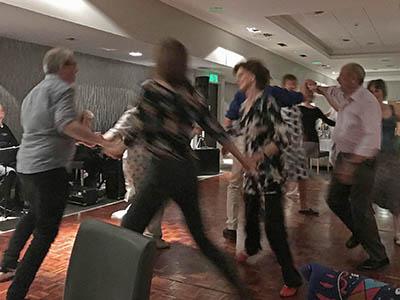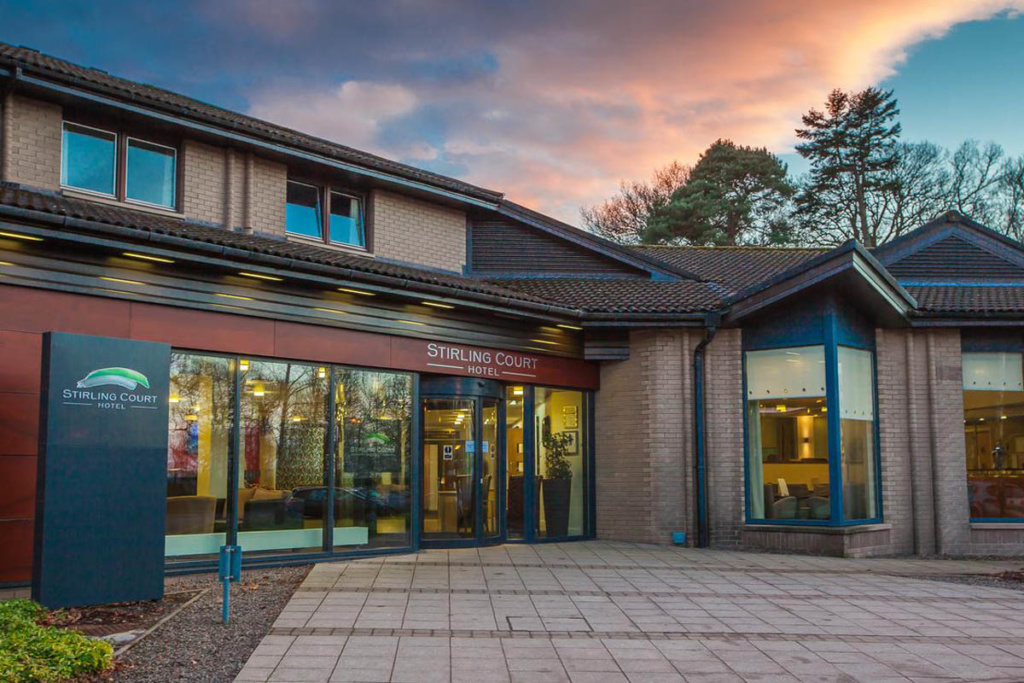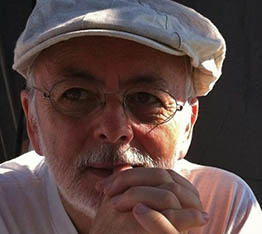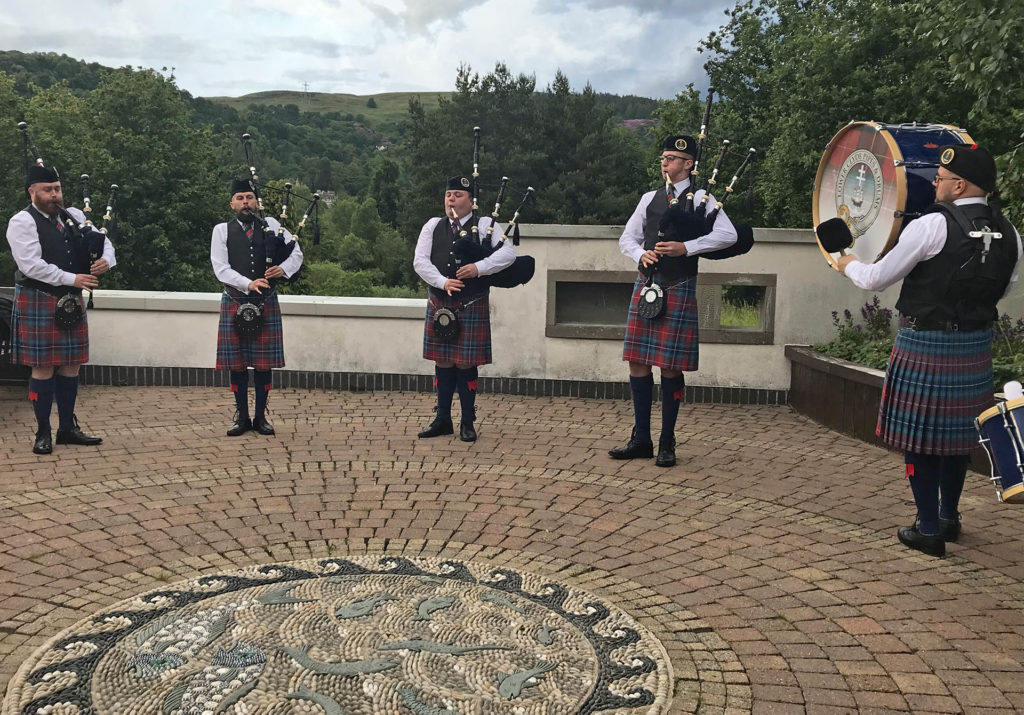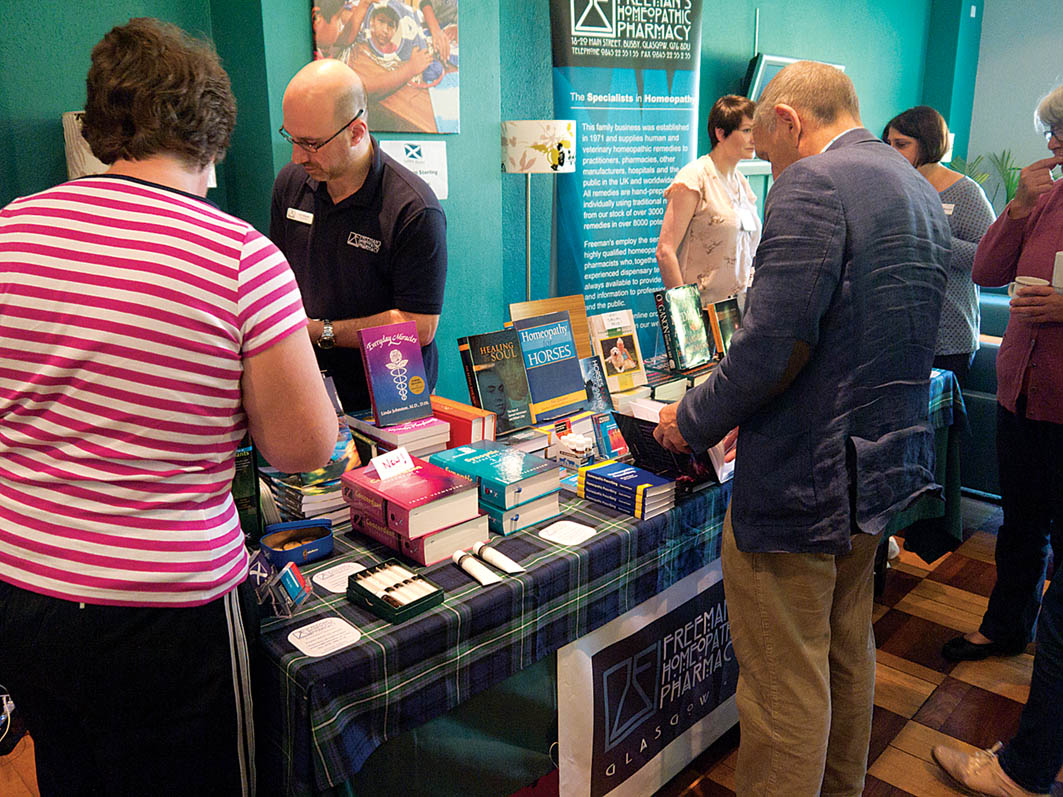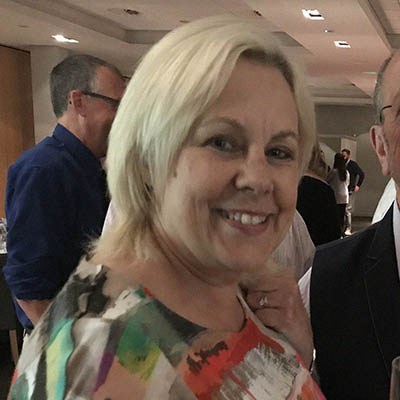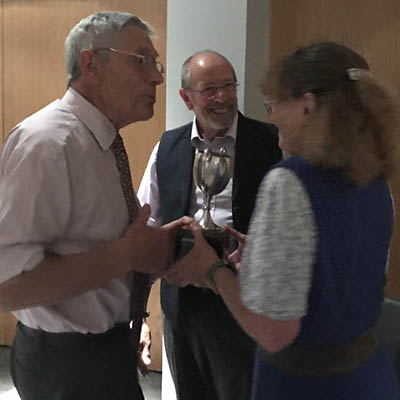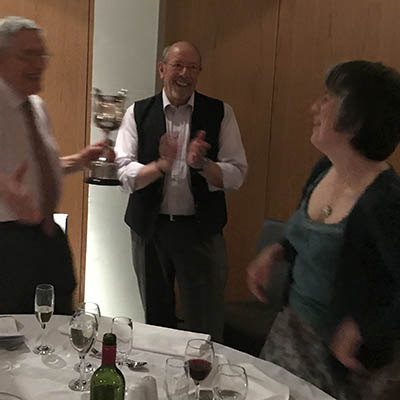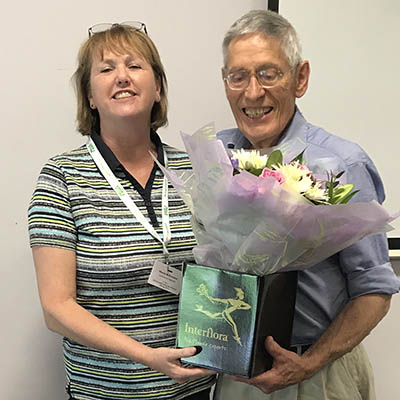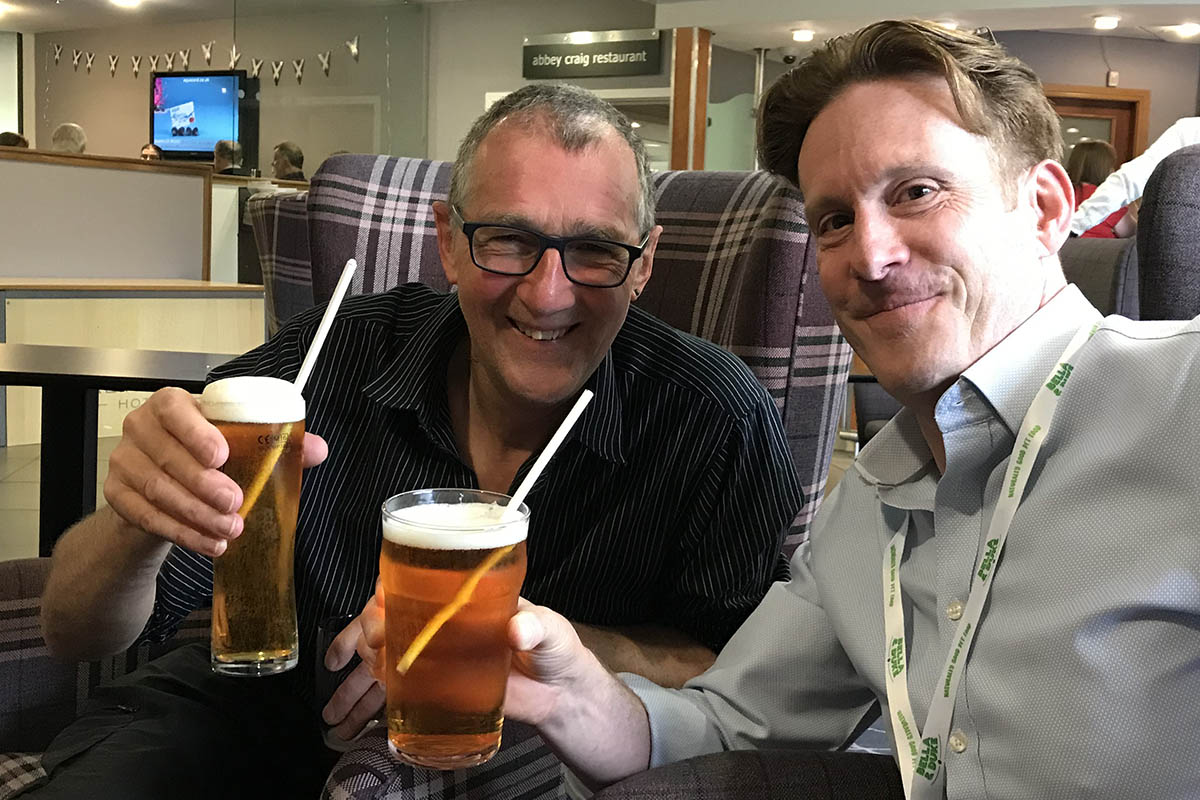Stirling Job
BAHVS Annual Conference, Stirling, Scotland
14 - 16 JUNE 2019
A Report by Peter Gregory
Alive and Kicking
The 2019 BAHVS Conference was held between 14th and 16th June at the Stirling Court Hotel on the campus of Stirling University in Scotland. The venue is set in a stunning location at the foot of the hills and the campus is landscaped around a lake, right next to the William Wallace memorial.
It was Wallace who defeated the English at the Battle of Stirling Bridge in 1270 and whose life was rather loosely depicted in the movie ‘Braveheart’. The theme of the conference was ‘Alive and kicking’, an appropriate title given the similarity of the attempts to annihilate veterinary homeopathy to the challenge that Wallace faced.
The main accommodation was in the hotel, but a significant number of us chose to share two ‘chalets’ each housing 6 delegates. This provided an opportunity to share ‘down time” with each other and discuss out several homeopathic issues of mutual interest. Thanks to Malene for organising this.

David Reilly
The opening address was given by Dr David Reilly, known to many of us as tutor and guest lecturer on veterinary homeopathic courses in the past, but also for his work in establishing the ‘new’ Glasgow Homeopathic Hospital.
David addressed the issue of our own search for wellness, and highlighted the high numbers of depression and suicide in the veterinary profession. He posed the question ‘Are you Alive and Kicking’ and proceeded to guide us into an understanding of our thoughts and beliefs, pointing out to us such truths as ‘our thoughts are ‘made up’’, and are simply hypotheses rather than ‘facts’.
He encouraged us to see this inner self as a plant, or a dog and posed the question ‘who is going to nurture this being?’ Our responsibility to care for ourselves can be summarised as ‘Look after the dog – all the rest is blah blah blah’.
Uniqueness
One long-term colleague of David’s is Bob Leckridge, no newcomer to our conferences, and an ideal person to follow on with the next session entitled ‘Uniqueness’.
Using a series of photographs he explored the understanding which each image had brought to mind and expanding some of the issues raised by the previous speaker. His message of personal uniqueness is perfectly enshrined in with the homeopathic viewpoint; in Bob’s words ‘health is a personal experience’.
“health is a personal experience”

He discussed the issue of balance – between the hemispheres of the brain; between order and wildness; mythologically between the crystal and the dragon. And encouraged us to see the world as a network of kisses rather than a network of stone.
He left us with 4 pointers to celebrating our uniqueness:
- Approach each day as if it is the first
- Approach each day as if it is the last
- See the view from on high
- Slow down
This was an ideal preparation for the BBQ which was held in mercifully dry conditions and even a splash of sunshine. A pipe band left many of us in awe, as did the positively unprecedented variety of vegetarian food available.
Vijayakar principles

Is homeopathy dangerous?
Shelley Epstein

On Saturday Shelley Epstein began the first of her four presentations, on the Vijayakar principles, developed by an Indian homeopathic doctor, who has studied closely the embryological development of the human, and linked this to the observations on the suppression of symptoms.
He has identified ‘layers’ of suppression based on his studies, and using this information we can make an accurate judgement on the direction the response to a homeopathic medicine is taking. The direction of cure may not be in accordance of our classical understanding based on Hering’s ‘Law.
In view of the conversations in the bar afterwards, this led inevitably to many of us reassessing some of the case histories we had otherwise interpreted differently. The concept of layers is accompanied by an interpretation of the miasms which differs slightly form the classical view.
Altogether this was a challenging but immensely interesting presentation. Shelley followed this with a discussion entitled ‘Is homeopathy dangerous?’, where we were invited to assess the significance of aggravations and other such reactions to homeopathy.
To a gathering of homeopaths this may seem a rhetorical question as we are generally aware of the potential reactions to homeopathy and how to prevent or deal with them, but it takes on a different significance when it forms the basis of the proposed regulations of the (USA) FDA which plans to subject homeopathic medicines to the same restrictions as conventional medicines, on the basis of safety.
This was expanded in Sara Fox Chapman’s presentation, although I am pleased to report that the FDA have recently agreed to meet a delegation of three prominent homeopaths to discuss the issue before any further action is taken.
Lee Kayne (Freeman's and Saltire Books) explained that the attitude of our own Veterinary Medicines Directorate to homeopathy is rather different, reassuring us that their approach is generally very co-operative.
After lunch the sponsors were offered an opportunity to make short presentations on their products, and Rowan Anderson gave a presentation on the role of lectins in leaky gut syndrome. It appears these substances are widespread, and are in high concentrations in oats and peanuts, so the author’s penchant for oatcakes and peanut butter may have to be reassessed.
Sarcodes
After the break, Sue Armstrong presented a detailed and comprehensive treatise on the use of Sarcodes in hormonal disease in animals.
I think most of us are aware of these homeopathic medicines but Sue presented another level of understanding of them and their uses, amply illustrated by numerous case histories. I would go so far as to state that this presentation represents a seminal body of information which should be available for all practising veterinary surgeons.
We are fortunate that our membership of BAHVS will afford us this opportunity.
Sue’s talk ended the day on a high note, which was maintained and exacerbated by the bubbly stuff kindly sponsored by Helios at the pre-dinner reception.
Dinner maintained a high standard of catering, and during the event President Chris Day made a short speech before presenting the two annual trophies: The Churchill Cup, for the best contributor to the Mag was awarded to Sara Fox –Chapman, while the VetriScience Cup for general contribution to the field of veterinary homeopathy went to Ilse Pedler.
After dinner we were entertained by a Ceilidh band, much to the enjoyment of those prepared to get up and give the dances a go.
Primary and Secondary Reactions of Remedies
Despite the late night, we were all up and ready for Sunday morning, when Shelley continued her set of lectures with one entitled ‘Primary and Secondary Reactions of Remedies’.
Having explained the physiological basis of such reactions in terms of Heat Shock Proteins, she went on to make the point that homeopathic provings tend to contain the symptomatology of both primary and secondary reactions. This inevitably also applies to the repertory, and usually there is no indication in the text of which they represent.
This can lead to inaccuracies and confusion in the use of the repertory, hence the development of the TBR2 repertory by Dimitriadis, which contains only primary symptoms.
The proceedings then took a turn into clinical homeopathy with a series of short presentations of clinical cases:
Lise Hansen presented three cases of auto-immune disease where homeopathy had been curative, emphasising the remarkable power of homeopathy to aid patients for which conventional medicine has little to offer.
Peter Gregory followed with a presentation of two canine patients in the same household who presented with symptoms of (different) snake remedies, Cenchris; and Lachesis followed by Naja respectively. The reflection of the owner’s remedy state within the same grouping was confirmed by their response to Naja prescribed by a ‘human’ homeopath.
Bernhard Hornig then presented the first of two sessions based around his experience and massive work towards creating a comprehensive veterinary repertory. He is nearing completion of a chapter for the symptoms of mastitis and other sections are in development.
While Bernhard estimates that the work could take another 40 years, he is hopeful that that can be markedly reduced by obtaining help from members of the BAHVS and IAVH. I am pleased to report that he received such offers following his presentation at Stirling.
Between Bernhard’s presentations, Ilse Pedler reported on a dog suffering from a skin condition who responded to butterfly remedy Linemitis. The keynotes included child-like behaviour, hyperactivity and the use of the word ‘floating ‘ by the owner.
Continuing the theme of sarcodes, Geoff Johnson presented an interesting case of a dog with anxiety issues who responded to Vernix caseosa. One of the features was that she felt better when covered by a blanket.
After lunch Nick Thompson took us back to the Organon to investigate what the great man wrote about diet. There was a general agreement that he would have agreed with feeding a species appropriate diet.
Nick went on to consider the importance of the bowel flora in health and emphasised the value of the bowel nosodes in rebalancing the gut. He also introduced the concept of the ‘stool score’ as a tool to objectively measure progress in improving gut health.
Ready to Rock & Write
For our penultimate session, ‘Ready to Rock and Write’, Shelley returned to the podium to encourage us all to submit case studies to the Journal of the American Holistic Veterinary Medicine Association (JAHVMA). Her enthusiasm is infectious and hopefully will inspire more of us to undertake the not inconsiderable task of submitting our cases for publication.
The finale of the conference saw Chris Day and myself attempt to amuse the company with three skits based on the main theme of the conference. (Watch videos here).
It seemed to work, and everyone appeared to leave the hall feeling well and truly ‘alive and kicking’.
This conference is for many of us the high spot of the year; a chance to meet friends and bask in a warm glow of togetherness. The positive energy it promulgates helps to sustain us when we are tempted to feel discouraged or dispirited. Our thanks go to Wendy and her able assistant Laura for organising what was a truly wonderful event.

